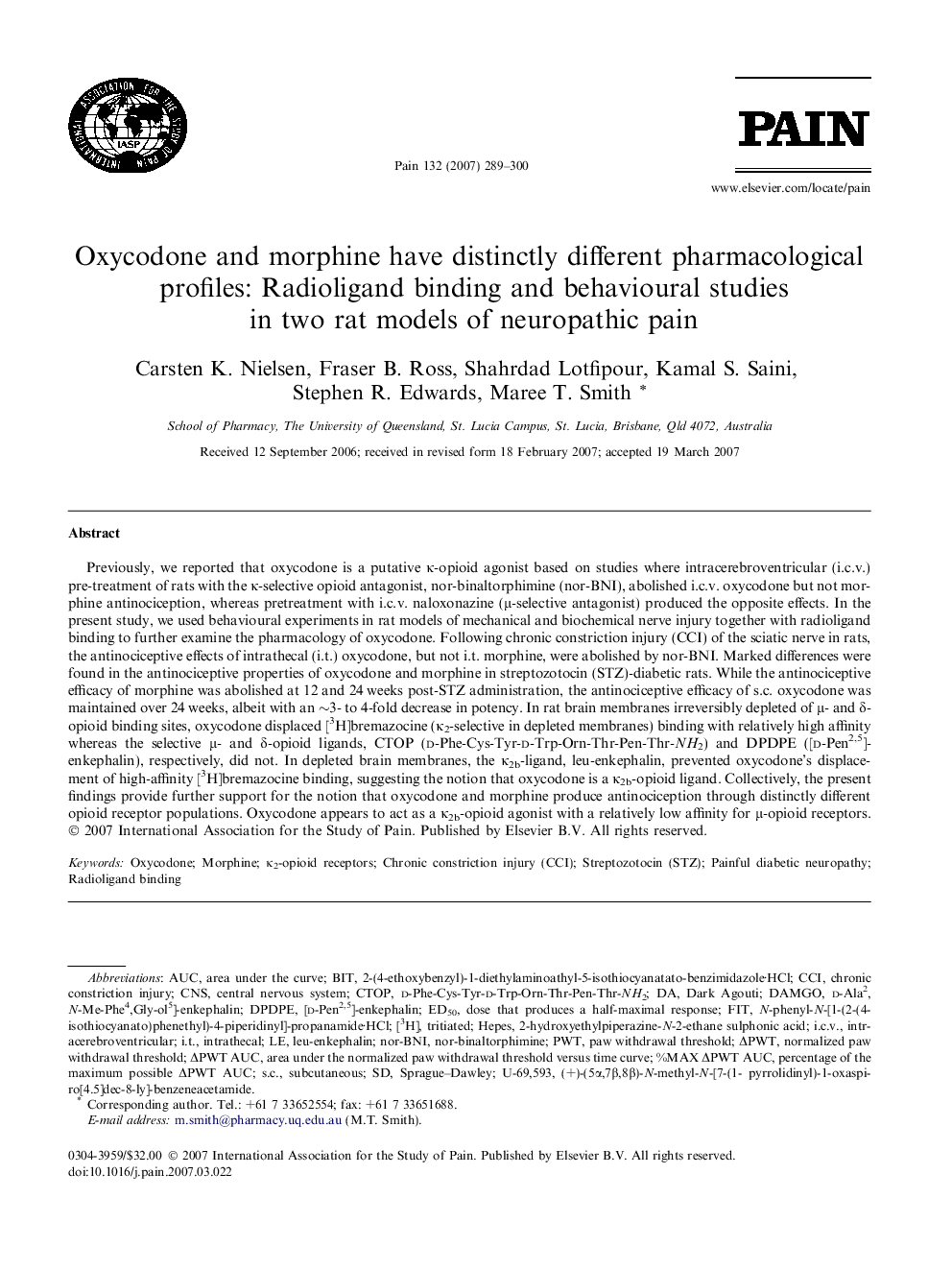| کد مقاله | کد نشریه | سال انتشار | مقاله انگلیسی | نسخه تمام متن |
|---|---|---|---|---|
| 915198 | 918435 | 2007 | 12 صفحه PDF | دانلود رایگان |

Previously, we reported that oxycodone is a putative κ-opioid agonist based on studies where intracerebroventricular (i.c.v.) pre-treatment of rats with the κ-selective opioid antagonist, nor-binaltorphimine (nor-BNI), abolished i.c.v. oxycodone but not morphine antinociception, whereas pretreatment with i.c.v. naloxonazine (μ-selective antagonist) produced the opposite effects. In the present study, we used behavioural experiments in rat models of mechanical and biochemical nerve injury together with radioligand binding to further examine the pharmacology of oxycodone. Following chronic constriction injury (CCI) of the sciatic nerve in rats, the antinociceptive effects of intrathecal (i.t.) oxycodone, but not i.t. morphine, were abolished by nor-BNI. Marked differences were found in the antinociceptive properties of oxycodone and morphine in streptozotocin (STZ)-diabetic rats. While the antinociceptive efficacy of morphine was abolished at 12 and 24 weeks post-STZ administration, the antinociceptive efficacy of s.c. oxycodone was maintained over 24 weeks, albeit with an ∼3- to 4-fold decrease in potency. In rat brain membranes irreversibly depleted of μ- and δ-opioid binding sites, oxycodone displaced [3H]bremazocine (κ2-selective in depleted membranes) binding with relatively high affinity whereas the selective μ- and δ-opioid ligands, CTOP (d-Phe-Cys-Tyr-d-Trp-Orn-Thr-Pen-Thr-NH2) and DPDPE ([d-Pen2,5]-enkephalin), respectively, did not. In depleted brain membranes, the κ2b-ligand, leu-enkephalin, prevented oxycodone’s displacement of high-affinity [3H]bremazocine binding, suggesting the notion that oxycodone is a κ2b-opioid ligand. Collectively, the present findings provide further support for the notion that oxycodone and morphine produce antinociception through distinctly different opioid receptor populations. Oxycodone appears to act as a κ2b-opioid agonist with a relatively low affinity for μ-opioid receptors.
Journal: PAIN - Volume 132, Issue 3, 5 December 2007, Pages 289–300